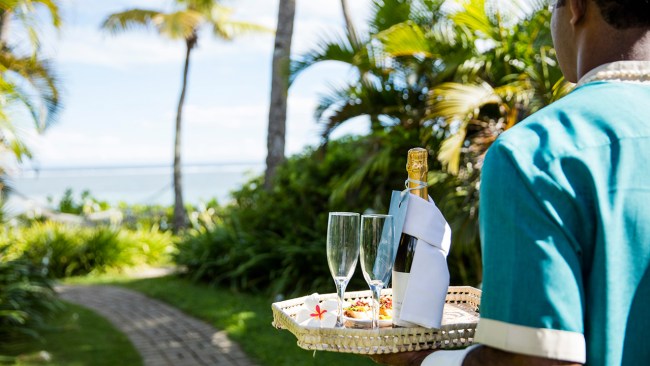I flew into the world's most dangerous airport, and my pilot didn't even spill his tea
On a recent flight to Tenzing-Hillary, Nepal, my pilot took off with a cup of tea next to his foot, and it didn't even spill.
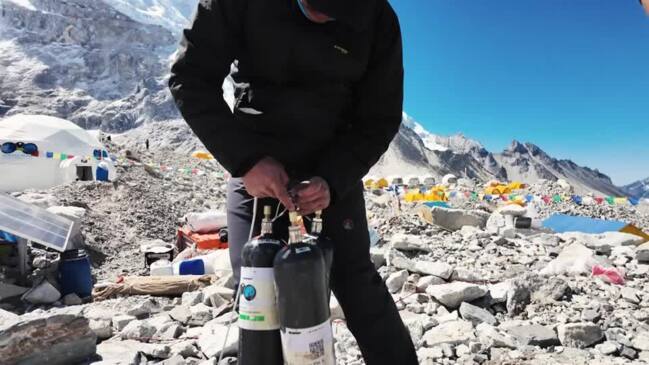
Lifestyle
Don't miss out on the headlines from Lifestyle. Followed categories will be added to My News.
The most reassuring thing about my impending flight to the “most dangerous airport in the world” is that take-off is delayed by an hour, maybe more. It’s not that I don’t want to fly to Tenzing-Hillary Airport today, but it’s just encouraging to know that the Civil Aviation Authority of Nepal takes this place’s infamous reputation so seriously.
I’m hanging out at Manthali Airport* at Ramechhap – an intrepid five-hour drive south-east of Kathmandu – for a 20-minute flight to the town of Lukla in the Khumbu region of the Nepalese Himalayas. Territory of the Sherpa people, and first steps on the trail for Mount Everest climbers and Everest Base Camp trekkers.

Flights here are constantly postponed and cancelled at the merest suggestion of strong winds or heavy cloud. A mighty pain in the butt for trekkers perhaps, who in theory can be stranded in Lukla, which has no road connections, for days at time. But given the airport’s history, it’s an inconvenience worth princess-ing through.
Finally, the steward hunches down in the sauna-warm cabin to perform her safety briefing, in Nepali then English. Most passengers (in the 2-1 seat configuration) are foreign trekkers and multi-lingual guides. An intense Yeti mint is both our in-flight meal and ear-popper. I nervously note the hand-painted red cross on the wall-mounted first-aid kit.
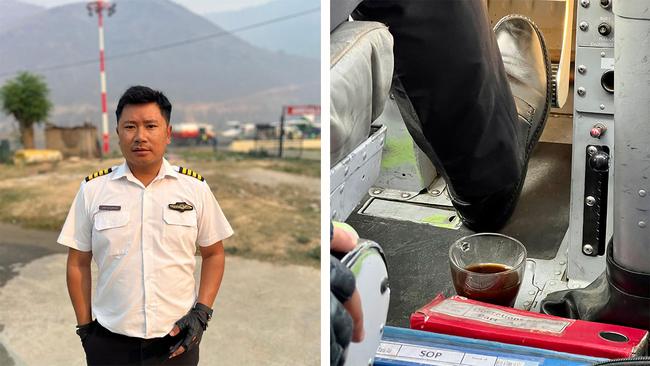
The second most reassuring thing about today’s flight? Tara Air pilot Captain B Gurung doesn’t spill a single drop from the glass of black tea perched near his right foot as he lifts the plane off Ramechhap’s runway (1218m).
We bank hard left up a monumental valley. Silhouettes of stupendous snow-topped peaks peek up, one at a time, ghosting from behind ambient air pollution and the scratched plane window. Little blue houses perched atop densely forested ridges below wink solar-panel reflections from their rooftops.
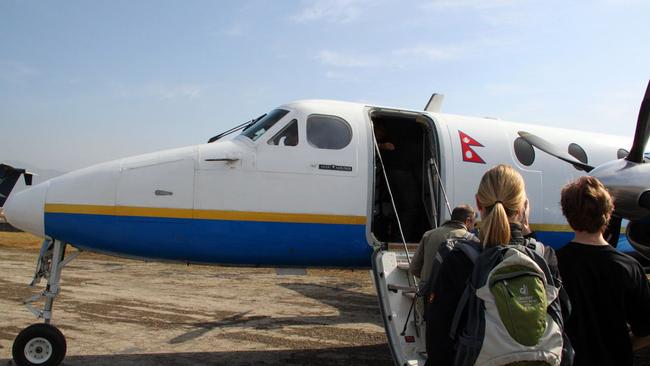
Our twin-engine Twin Otter isn’t a particularly recent vintage but seems robust enough, even if there’s a whiff of unburned avgas in the cabin – probably because the fuel cap is right next to the door. This ‘turboprop’ is a designated STOL (short-take-off-and-landing) aircraft. You don’t want to even contemplate landing anything larger on Lukla’s mountain-shrouded 527-metre-long, 30-metre-wide airstrip.
Sitting in row one (I fought for it), I watch captain Gurung and his co-pilot’s every move. Their eyes fixate straight ahead, mostly, calmly scanning the busy horizon. The cockpit’s wall of dials and LCD screens receive far less attention. Their black-leather-gloved hands are perpetually pulling knobs, twisting dials, and reaching up to adjust the ceiling-mounted throttle lever. Analogue flying in the digital age.
A small cloud bank jostles the Twin Otter. The engines complain, soon calming down to their standard, annoying drone. There’s an abundant spectrum of aviation conundrums to be solved on this extraordinary route.
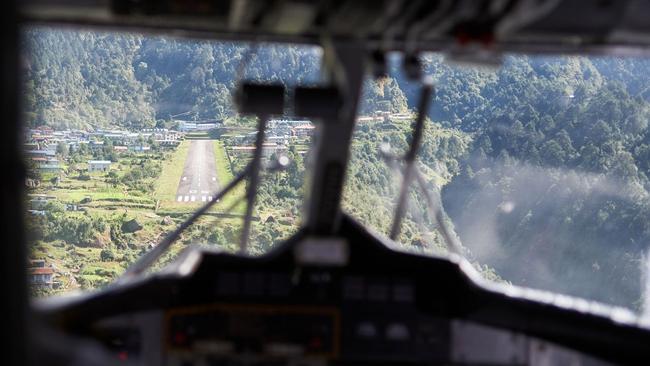
“The frequently changing weather is the biggest challenge,” says 33-year-old Gurung, a Kathmandu local. “The geography is too – this valley is very narrow for flying. Then there’s the one-way landing strip in Lukla. Lining up and getting the plane up the sloping runway is the final challenge.”
The airstrip was built (at 2860m) under the supervision of Everest conqueror Sir Edmund Hillary in 1964, to accommodate supplies for infrastructure projects which included hospitals and schools. In 2008, it was named in his and climbing partner Sherpa Tenzing Norgay’s honour (locals first, naming-wise).
See also: The trek no-one knows about
The “most-dangerous” title reportedly first popped up in a History Channel show called World’s Most Extreme Airports in 2010. Does Tenzing-Hillary Airport deserve that reputation? Well, over the years, there’s been a steady log of accidents.

The worst? In 2008 a Yeti Airlines Twin Otter crashed on final approach a thick-clouded day (there’s grainy footage on YouTube). Eighteen passengers and crew died, but the captain survived. Most recently, in 2019, three crew died when a passenger-less plane veered off the narrow runway into a stationary helicopter.
Landing and taking off on an airstrip with a 12-per-cent gradient is really where Captain Gurung earns his Nepalese rupees. Visual flight rules (VFR) apply so the captain must be able to “see and avoid” potential problems. And, unlike many airports, there’s stuff-all chance of performing a ‘go-around’ if you miss the approach (when a pilot aborts the landing and tries again).
Captain Gurung had to take part in 100 (STOL) landings as co-pilot before taking charge of a Lukla touchdown. “I really remember the first time I landed here back in 2012 as co-pilot,” he says. “It was thrilling, but also a bit scary. We all know that it’s one of the world’s most dangerous airports. It’s turbulent, every landing is challenging. But don’t worry, I trained in the US and am Delta-qualified [he laughs].”

Today, the 20-minute flight flies by incident-free, as far as I know, my bum no more or less puckered than on any other small-plane flight I’ve been on. The captain feathers the Twin Otter onto the tarmac and taxis up to the tiny turning area. We retrieve our trekking packs and poles (deemed too dangerous to carry in the cabin) and stare up, gob-smacked by the site of the giants we’ll soon be walking amongst.
Captain Gurung only has time for a few quick hits on his vape before pointing the plane down the slope, thrusting it off the monumental ridge, Ramechhap-bound again. He’s got to clear a bottleneck of passengers from cancelled flights before the Himalayan weather inevitably closes in again.
The writer was a guest on a World Expeditions trek.
(*Few commercial flights fly directly from Kathmandu to Lukla these days, especially in peak trekking season, apparently because of the capital’s capacity issues.)
Originally published as I flew into the world's most dangerous airport, and my pilot didn't even spill his tea



